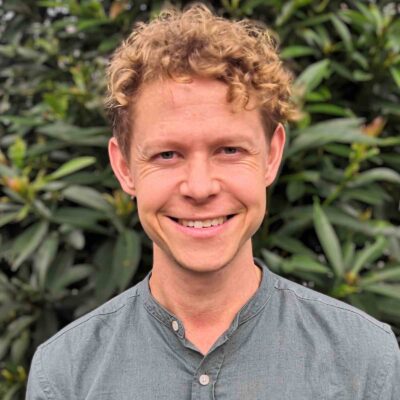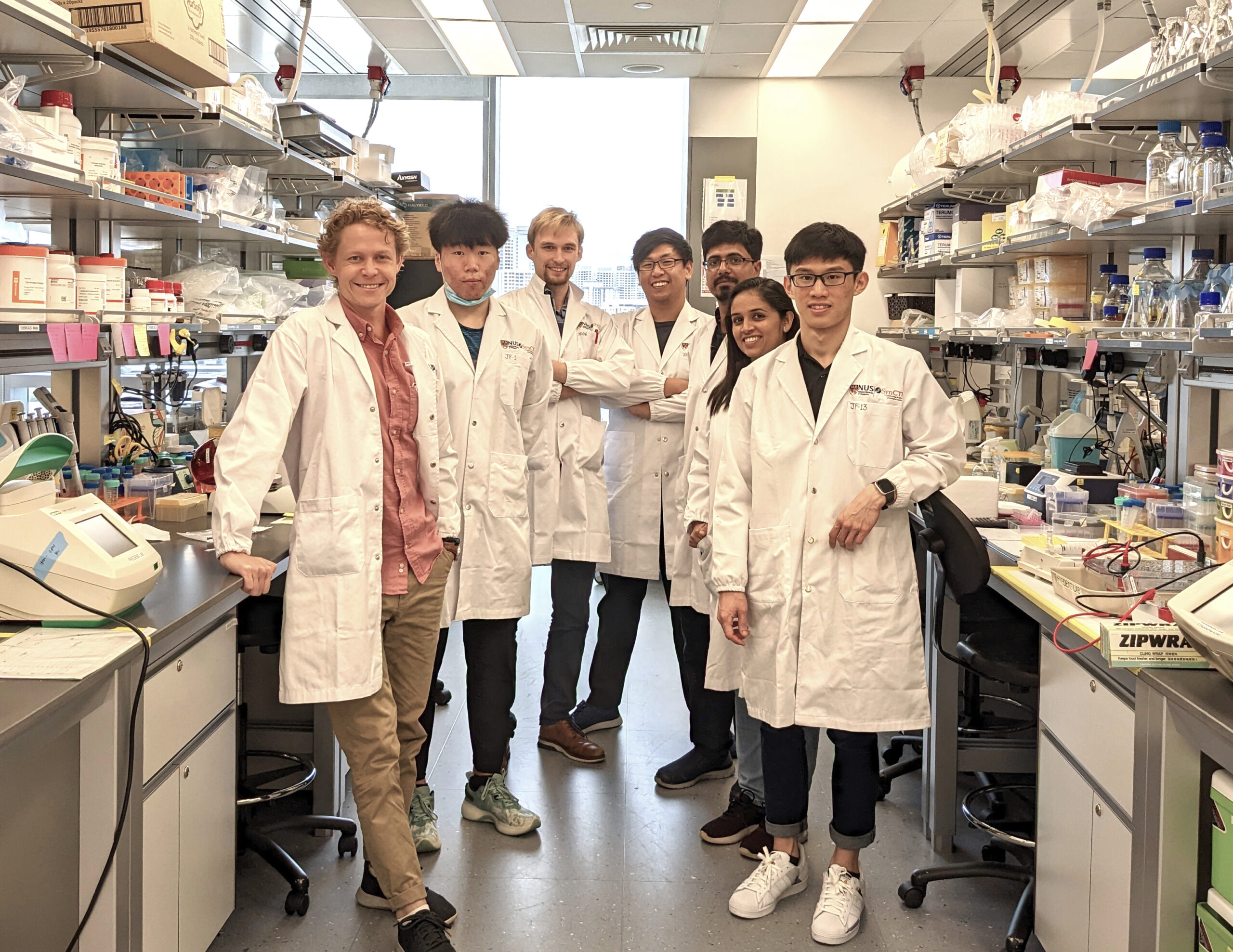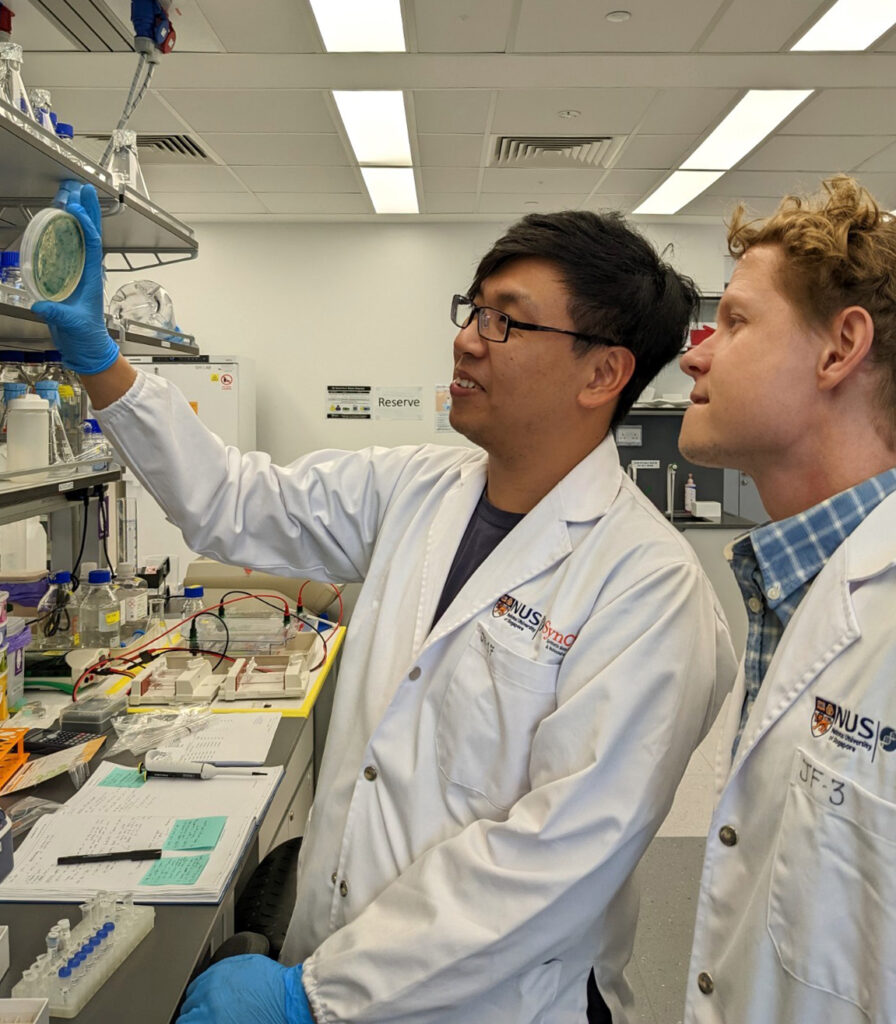Expanding the frontiers of genome engineering with Julius Fredens
By Kami Navarro
 In the annals of scientific history, the year 1953 is perhaps most notable for the discovery of the DNA double helix by James Watson and Francis Crick. Their findings heralded the age of modern molecular biology, paving the way for now-ubiquitous technologies like the polymerase chain reaction and DNA sequencing.
In the annals of scientific history, the year 1953 is perhaps most notable for the discovery of the DNA double helix by James Watson and Francis Crick. Their findings heralded the age of modern molecular biology, paving the way for now-ubiquitous technologies like the polymerase chain reaction and DNA sequencing. Seventy years since Watson and Crick’s milestone, scientists like Julius Fredens are rewriting the code of life to answer fundamental questions in molecular biology, construct designer genomes, and more.
After receiving his PhD from the University of Southern Denmark, Fredens embarked on a postdoctoral stint at the renowned MRC Laboratory of Molecular Biology—nicknamed ‘The Nobel Prize Factory’ for producing no less than 12 laureates. There, he co-authored the first synthetic Escherichia coli genome with a genetic code requiring fewer amino acid-encoding sequences than usual.
Taking his talents to the tropics, in 2021, Fredens joined the National University of Singapore as a Presidential Young Professor and Principal Investigator at SynCTI. Building upon his core expertise in genome engineering, Fredens’ freshly minted laboratory focuses on tailoring microbes and phages for novel applications—including developing new strategies to deliver DNA to human cells andreprogramming bacterial viruses to infect new hosts.
In this interview, get to know SynCTI’s newest Principal Investigator and hear about his experience in sunny Singapore and NUS thus far.
1. What does a day in your role as an Assistant Professor look like?
Most days are quite interactive, which is the way I prefer it. There is some office work to be done, mostly admin, meetings, and lecture preparation. But I’m lucky enough to have my office close to the lab and my research team, so we discuss daily their ongoing experiments as well as intriguing/wacky(in the eyes of the beholder) ideas for future research. And then, of course, a lunch break and a coffee break together most days to talk about anything but science.
2. What inspired you to explore synthetic biology?
As a child I had this obsession with Lego and loved how it allows you to dream up a shape or function and then bring it to life. Science later replaced this fascination, but when I got introduced to synthetic biology in university, the passion for constructing and creating returned. Ever since, I have had no doubts that this magical crossroad between fundamental biology, engineering, and unrestricted creativity is where I am most entertained.

Fredens and his students at the Genome Engineering laboratory
3. What do you enjoy most about working at SynCTI?
SynCTI is located in a beautiful part of NUS’ exotic campus and provides excellent infrastructure and facilities for our research. But as always, it’s mostly about the people: This group of highly competentand enthusiastic researchers and students make for a great environment to learn, develop, and create.
4. What do you hope your laboratory can accomplish over the next few years?
We have a portfolio of projects that build on related techniques but target diverse issues, ranging from gene therapy to strain engineering and genetic circuits. Over the next few years, I expect that we will make breakthroughs in some of these areas and open up a flurry of exciting new research and collaborations.
5. What completed research project are you proudest of so far?
My lab at SynCTI is still too new to have completed projects, so I will have to point back to theentirely synthetic genome I worked on during my postdoc. While the completion of that genome invoked a feeling of tremendous joy and pride, many of our ongoing projects here at SynCTI have the potential to give that same kick.

Fredens and PhD rotatiion student Shujian Ong in the laboratory
6. Is there any advice you’d like to share to aspiring synthetic biologists?
As I said earlier, “syn bio is like a box of Lego bricks,” so it simply comes down to inspiration and curiosity, while the technical skills naturally follows. The iGEM competition is a great way for newcomers to get a taste of the topic, since it consists of teams of enthusiastic students that design-build-learn and thoroughly communicate the process.
7. Outside of work, what do you enjoy doing?
I’m still alien enough to spend most of my spare time exploring Singapore’s indoors as well as outdoors. In my remaining time, I swim and play jazz.


